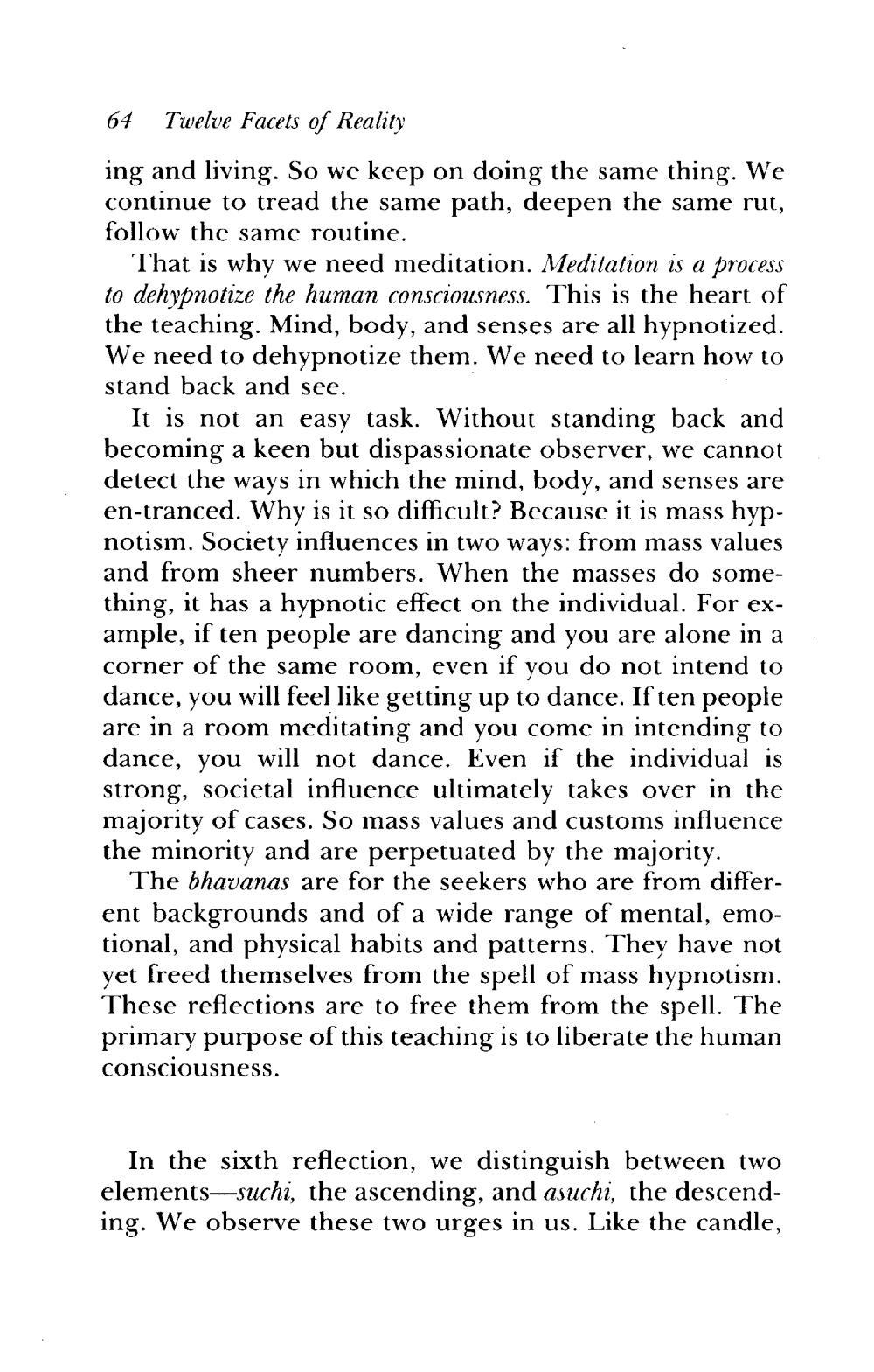________________
64 Twelve Facets of Reality ing and living. So we keep on doing the same thing. We continue to tread the same path, deepen the same rut, follow the same routine.
That is why we need meditation. Meditation is a process to dehypnotize the human consciousness. This is the heart of the teaching. Mind, body, and senses are all hypnotized. We need to dehypnotize them. We need to learn how to stand back and see.
It is not an easy task. Without standing back and becoming a keen but dispassionate observer, we cannot detect the ways in which the mind, body, and senses are en-tranced. Why is it so difficult? Because it is mass hypnotism. Society influences in two ways: from mass values and from sheer numbers. When the masses do something, it has a hypnotic effect on the individual. For example, if ten people are dancing and you are alone in a corner of the same room, even if you do not intend to dance, you will feel like getting up to dance. If ten people are in a room meditating and you come in intending to dance, you will not dance. Even if the individual is strong, societal influence ultimately takes over in the majority of cases. So mass values and customs influence the minority and are perpetuated by the majority.
The bhavanas are for the seekers who are from different backgrounds and of a wide range of mental, emotional, and physical habits and patterns. They have not yet freed themselves from the spell of mass hypnotism. These reflections are to free them from the spell. The primary purpose of this teaching is to liberate the human consciousness.
In the sixth reflection, we distinguish between two elements—suchi, the ascending, and asuchi, the descending. We observe these two urges in us. Like the candle,




